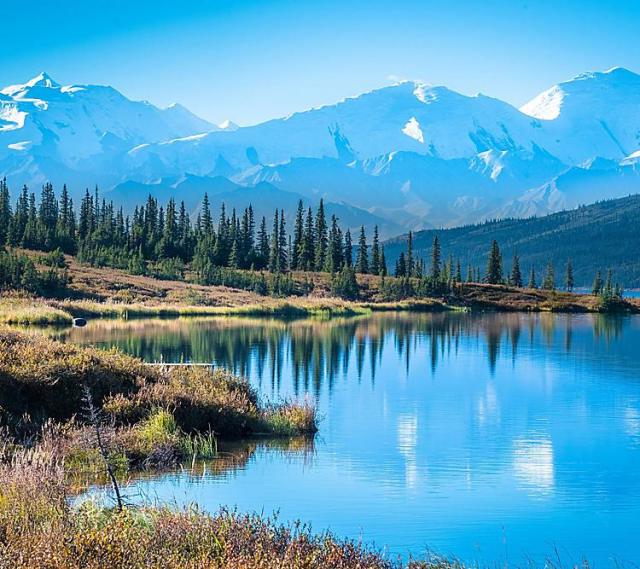The first people probably came to what is now Alaska about 13,000 years ago. They either walked or sailed from what is now Russia, which was connected to Alaska by a patch of land up to 600 miles wide called the Bering Land Bridge. In 1867 the United States purchased the land from Russian settlers for two cents an acre. Alaska became the 49th U.S. state in 1959. Indigenous people including the Inuit, Tlingit, Haida, Aleuts, Athabascans, and Yup'ik still live here.
The state is bordered by Canada on the east, the Beaufort Sea and Arctic Ocean in the north, the Bering Sea and the Chukchi Sea in the west, and the Pacific Ocean and Gulf of Alaska in the south. Alaska deserves its reputation for being cold. Much of the state is covered in a layer of permafrost—permanently frozen soil—and it’s home to the largest glacier in North America, the Bering Glacier.
Off the north and west coasts of Alaska you might spot polar bears, beluga whales, and walruses. More big mammals include black bears, moose, Dall sheep, musk oxen, caribou, and the world’s largest brown bear, the Kodiak. Alaska is also home to birds such as albatross, eagles, and loons.

